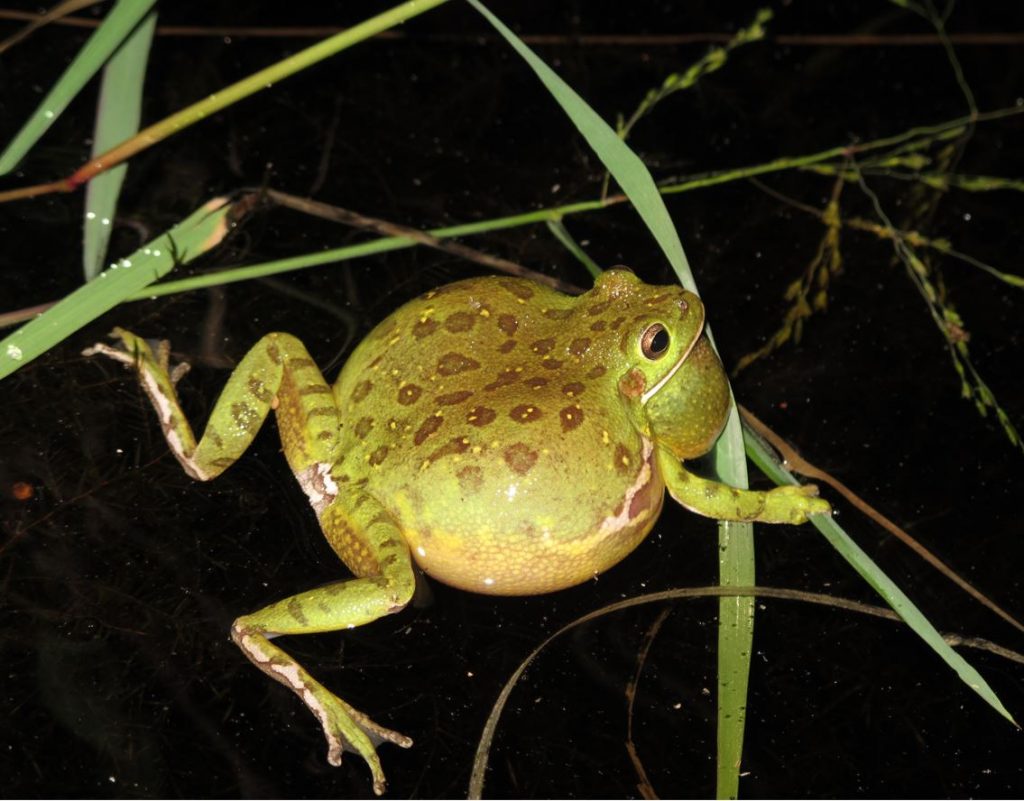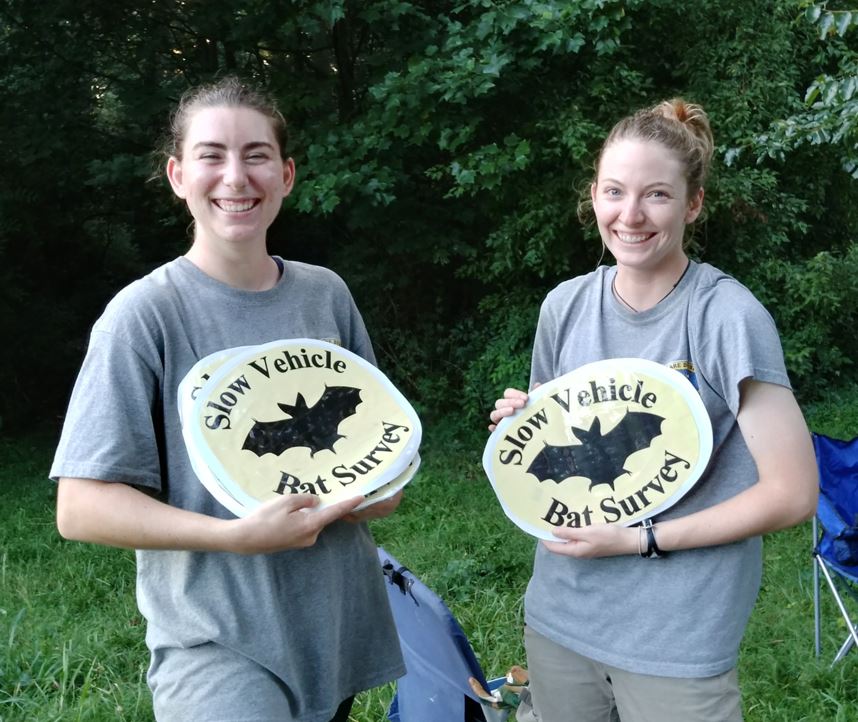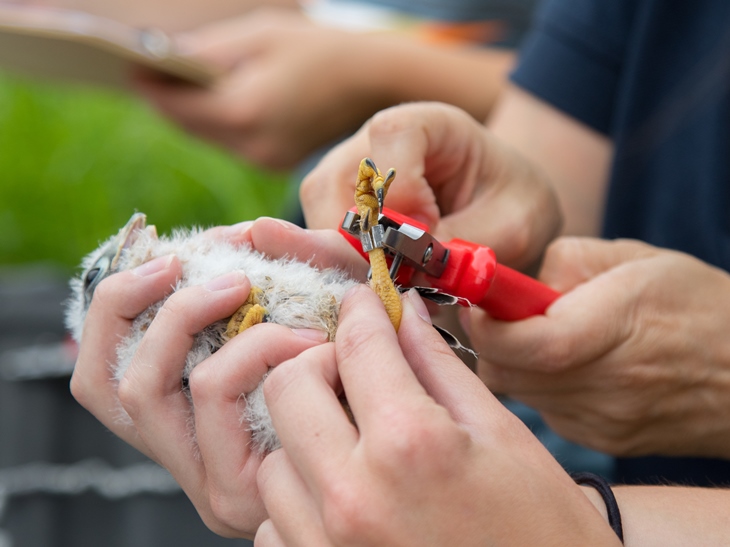By Joe Rogerson
 The monarch butterfly, American kestrel and barking tree frog are among the nearly 100 most endangered species in Delaware, as we learned in the first part of our series on endangered species in Delaware.
The monarch butterfly, American kestrel and barking tree frog are among the nearly 100 most endangered species in Delaware, as we learned in the first part of our series on endangered species in Delaware.
This article focuses on the Delaware Wildlife Action Plan, or DEWAP. The plan outlines the steps Delaware Department of Natural Resources and Environmental Control’s Division of Fish and Wildlife and its partners are taking to help keep today’s wildlife from becoming tomorrow’s memory.
The DEWAP aims to eliminate, minimize or mitigate issues facing Delaware’s wildlife species – especially wildlife on Delaware’s endangered species list and Species in Greatest Conservation Need (SGCN) list.
 The DNREC Division of Fish and Wildlife surveys, monitors and conducts research to obtain scientific information about species and habitat distribution, abundance and population status as recommended in the DEWAP.
The DNREC Division of Fish and Wildlife surveys, monitors and conducts research to obtain scientific information about species and habitat distribution, abundance and population status as recommended in the DEWAP.
This information is used to identify limiting factors, habitat requirements and other data needs for SGCN. These data help provide important information to better identify and address emerging issues such as new diseases or invasive species or the long-term impacts from climate change that may pose threats in the coming years.
Some conservation actions, such as the control of the invasive wetland plant species phragmites help minimize habitat stressors and improve key habitats for SGCN, while other efforts support regional planning and coordination efforts.
The Division of Fish and Wildlife works with many public and private partners to help coordinate research and management. These partners include the U.S. Fish and Wildlife Service (USFWS), the Delaware Department of Transportation (DelDOT) and the Delaware Department of Agriculture (DDA), as well as local governments and municipalities, non-profit organizations and private landowners.
 Climate change impacts to endangered species and other SGCN are being addressed throughout Delaware by actions including building resiliency to wetland systems and impoundments vulnerable to coastal storms and sea level rise, such as at the USFWS Prime Hook National Wildlife Refuge in Sussex County and at the state Little Creek Wildlife Area and Ted Harvey Conservation Area in Kent County. We are also restoring coastal forests damaged by saltwater intrusion from storm surges in the Milford Neck Conservation Area. These projects also examined future climate change scenarios and developed potential new strategies to protect endangered species, and other SGCN and their habitats from the effects of climate change and sea level rise.
Climate change impacts to endangered species and other SGCN are being addressed throughout Delaware by actions including building resiliency to wetland systems and impoundments vulnerable to coastal storms and sea level rise, such as at the USFWS Prime Hook National Wildlife Refuge in Sussex County and at the state Little Creek Wildlife Area and Ted Harvey Conservation Area in Kent County. We are also restoring coastal forests damaged by saltwater intrusion from storm surges in the Milford Neck Conservation Area. These projects also examined future climate change scenarios and developed potential new strategies to protect endangered species, and other SGCN and their habitats from the effects of climate change and sea level rise.
Although much of this habitat work is being done on public lands, private landowners may be eligible for funding to promote opportunities to enhance wildlife conservation and habitat management on their properties. Cost share projects, such as the Wildlife Habitat Incentive Program, can provide funding to create and maintain early successional field habitat, warm season grass planting, control of invasive species and wetland restoration. The division and its partners can also provide technical assistance for many of these projects.
Coordination with DelDOT and municipalities is helping to mitigate the effects of roads and other barriers to wildlife by establishing wildlife-friendly road crossings, stream culvert passage designs and strategic road placement to minimize the spread of invasive species, reduce unwanted roadway drainage and runoff into nearby wetlands.
Land acquisition is another tool being used to conserve endangered species and other SGCN and their habitats. Collectively, state wildlife areas, state parks and estuarine reserves now total more than 100,000 acres of state lands in Delaware.
Municipalities, conservation organizations and citizens all have the ability to contribute to the conservation of Delaware’s fish and wildlife. Unfortunately, most protected lands in the state aren’t large enough to support every vulnerable species, so a strategy of increasing the size of protected lands and connecting them to other protected areas is needed. Prioritizing acquisitions with wildlife conservation as a major goal will strategically help address habitat management, human disturbance, and fish and wildlife conservation.
 Protection of aquatic systems is also challenging because effects are generated throughout an entire watershed, including contaminants and invasive species that can impact aquatic habitats far from their sources. We are expanding projects to restore stream connectivity and improve the flow rates and water quality through programs like the Water Resources Registry and the Delaware Bayshore Initiative.
Protection of aquatic systems is also challenging because effects are generated throughout an entire watershed, including contaminants and invasive species that can impact aquatic habitats far from their sources. We are expanding projects to restore stream connectivity and improve the flow rates and water quality through programs like the Water Resources Registry and the Delaware Bayshore Initiative.
As an example, the DNREC Division of Fish and Wildlife purchased 52 acres of degraded tidal marsh as part of the Milford Neck Wildlife Area, which was less than half a mile from of the most significant shorebird stopover site on Delaware Bay, the Mispillion Harbor. The goal was to restore the degraded site to provide roosting habitat for shorebird SGCN as well as nesting habitat for the imperiled saltmarsh sparrow. The project was supported by the Delaware Ornithological Society and other non-government partners.
Other land acquisitions and plans continue to involve conservation partners such as The Nature Conservancy. The DDA Forest Service’s efforts include developing a plan focusing on the critical Blackbird-Millington Corridor north of Smyrna. Another partner project is the Great Cypress Swamp along Delaware’s southern boundary, which contains 10,000 acres of protected lands owned by Delaware Wild Lands, Inc. where there is continued focus on habitat conservation and restoration. The Nanticoke Watershed Restoration Plan is a multi-partner project that identifies restoration and conservation targets for water quality and wildlife habitat.
The Nature Conservancy and the University of Delaware Water Resources Agency are working to conserve the Brandywine-Christina watershed. The U.S. Forest Service Legacy Program provided funding to protect threatened working forestlands through land purchase and conservation easements at Delaware’s four legacy forest areas located at White Clay Creek, Blackbird/Blackiston, Redden/Ellendale and Cypress Swamp, which contain the highest concentrations of forests in Delaware.

Efforts are ongoing to identify and compile information on important estuaries and marine habitats in Delaware. Examples include shoals, artificial reefs, oyster reefs and potential Atlantic sturgeon spawning areas near Marcus Hook on the Delaware River.
 Monitoring Delaware’s endangered species and other SGCN and their habitats, and the effectiveness of conservation actions in the Delaware Wildlife Action Plan, will provide information for the Division of Fish and Wildlife and its partners to measure success.
Monitoring Delaware’s endangered species and other SGCN and their habitats, and the effectiveness of conservation actions in the Delaware Wildlife Action Plan, will provide information for the Division of Fish and Wildlife and its partners to measure success.
The tools exist, the networks and partnerships are in place and the conservation measures needed to conserve Delaware’s wildlife have been identified and are within reach.
The next ten-year Delaware Wildlife Action Plan blueprint to ensure thriving wildlife diversity in Delaware will cover the years 2025–2035 and will provide a measuring stick of what has been accomplished as well as what more needs to be done to keep today’s wildlife from becoming tomorrow’s memory.
Related Topics: animals, conservation, education, endangered species, fish and wildlife, habitat, nature, science, wildlife, wildlife diversity